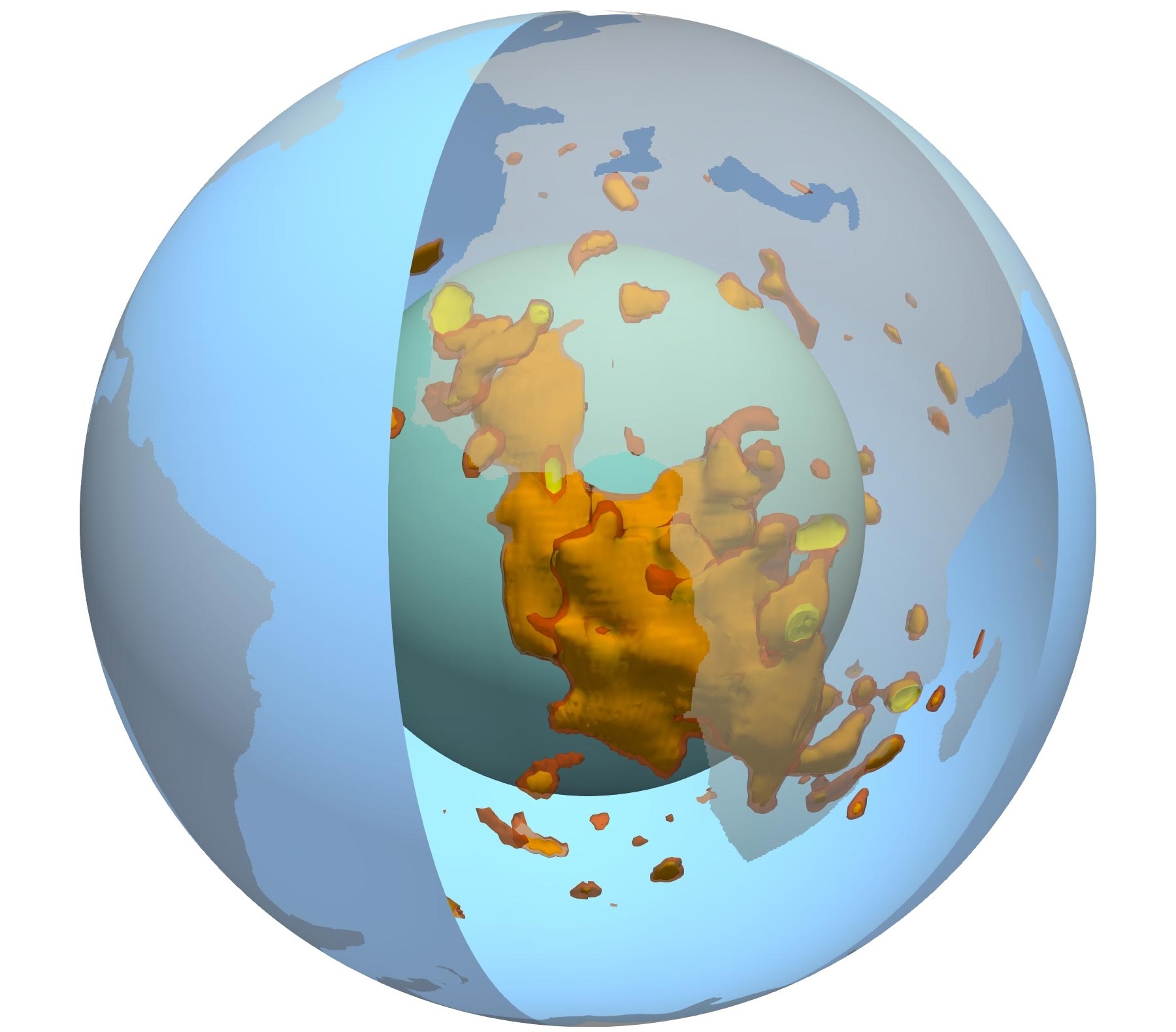
3D view of the point in Earth’s mantle below Africa, shown in red, yellow, and orange. Cyan represents the main mantle boundary, blue indicates the surface, and transparent gray indicates the continents. Credit: Mingming Li / ASU
The earth is layered like an onion, with a thin outer crust, a thick, sticky mantle, a liquid outer core, and a solid inner core. Within the mantle, there are two massive point-like structures, roughly on either side of the planet. The points, officially referred to as Large Low Speed Provinces (LLSVPs), are each the size of a continent and 100 times taller than Mount Everest. One is located under the African continent, the other under the Pacific Ocean.
Using instruments that measure seismic waves, scientists know that these two blobs have complex shapes and structures, but despite their notable features, little is known about why the blobs exist or what led to their strange shapes.
ASU scientists Qian Yuan and Mingming Li of the College of Earth and Space Exploration set out to learn more about these two points using geodynamic modeling and analyzes of published seismic studies. Through their research, they were able to determine the maximum height that blobs reach and how the size and density of blobs, as well as the surrounding viscosity in the mantle, can control their height. Their research was recently published in
The results of their seismic analysis led to a surprising discovery that the blob under the African continent is about 621 miles (1,000 km) higher than the blob under the Pacific Ocean. According to Yuan and Li, the best explanation for the vast height difference between the two is that the blob under the African continent is less dense (and therefore less stable) than the one under the Pacific Ocean.
To conduct their research, Yuan and Li designed and ran hundreds of mantle convection models simulations. They exhaustively tested the effects of key factors that may affect the height of the blobs, including the volume of the blobs and the contrasts of density and viscosity of the blobs compared with their surroundings. They found that to explain the large differences of height between the two blobs, the one under the African continent must be of a lower density than that of the blob under the Pacific Ocean, indicating that the two may have different composition and evolution.
“Our calculations found that the initial volume of the blobs does not affect their height,” lead author Yuan said. “The height of the blobs is mostly controlled by how dense they are and the viscosity of the surrounding mantle.”
“The Africa LLVP may have been rising in recent geological time,” co-author Li added. “This may explain the elevating surface topography and intense volcanism in eastern Africa.”
These findings may fundamentally change the way scientists think about the deep mantle processes and how they can affect the surface of the Earth. The unstable nature of the blob under the African continent, for example, may be related to continental changes in topography, gravity, surface volcanism and plate motion.
“Our combination of the analysis of seismic results and the geodynamic modeling provides new insights on the nature of the Earth’s largest structures in the deep interior and their interaction with the surrounding mantle,” Yuan said. “This work has far-reaching implications for scientists trying to understand the present-day status and the evolution of the deep mantle structure, and the nature of mantle convection.”
Reference: “Instability of the African large low-shear-wave-velocity province due to its low intrinsic density” by Qian Yuan and Mingming Li, 10 March 2022, Nature Geoscience.
DOI: 10.1038/s41561-022-00908-3

“Avid problem solver. Extreme social media junkie. Beer buff. Coffee guru. Internet geek. Travel ninja.”





More Stories
In Greece Porsche 911 50th Anniversary – How much does it cost?
PS Plus: With a free Harry Potter game, the new season begins on the service
Sony set to unveil PS5 Pro before holiday season – Playstation